Abstract
Pigeons responded on concurrent chains with equal initial- and terminal-link durations. In all conditions, the terminal links of one chain ended reliably in reinforcement; the terminal links on the alternative chain ended in either food or blackout. In Experiment 1, the terminal-link stimuli were correlated with (signaled) the outcome, and the durations of the initial and terminal links were varied across conditions. Preference did not vary systematically across conditions. In Experiment 2, terminal-link durations were varied under different stimulus conditions. The initial links were variable-interval 80-s schedules. Preference for the reliable alternative was generally higher in unsignaled than in signaled conditions. Preference increased with terminal-link durations only in the unsignaled conditions. There were no consistent differences between conditions with and without a common signal for reinforcement on the two chains. In the first series of conditions in Experiment 3, a single response was required in the initial links, and the stimulus conditions during 50-s terminal links were varied. Preference for the reliable outcome approached 1.0 in unsignaled conditions and was considerably lower (below .50 for 3 of 5 subjects) in signaled conditions. In a final series of signaled conditions with relatively long terminal links, preference varied with duration of the initial links. The results extend previous findings and are discussed in terms of the delay reduction signaled by terminal-link stimuli.
Full text
PDF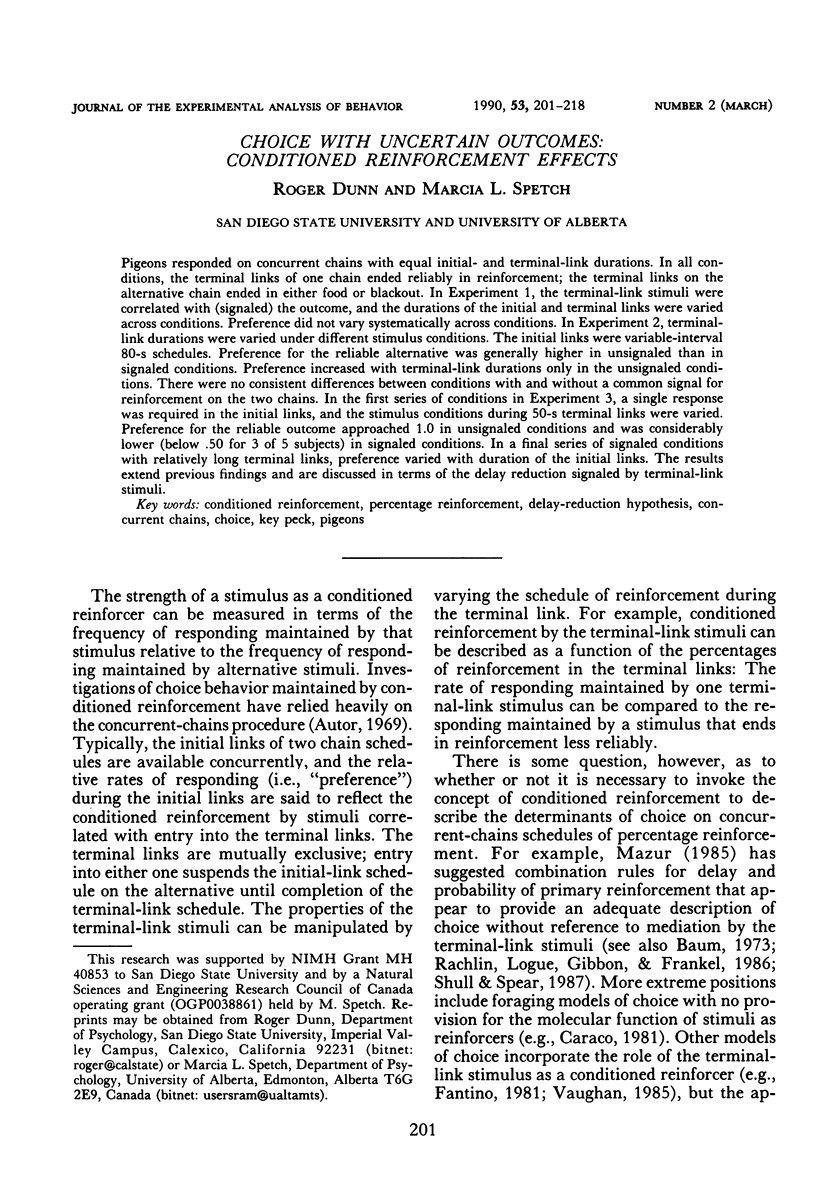
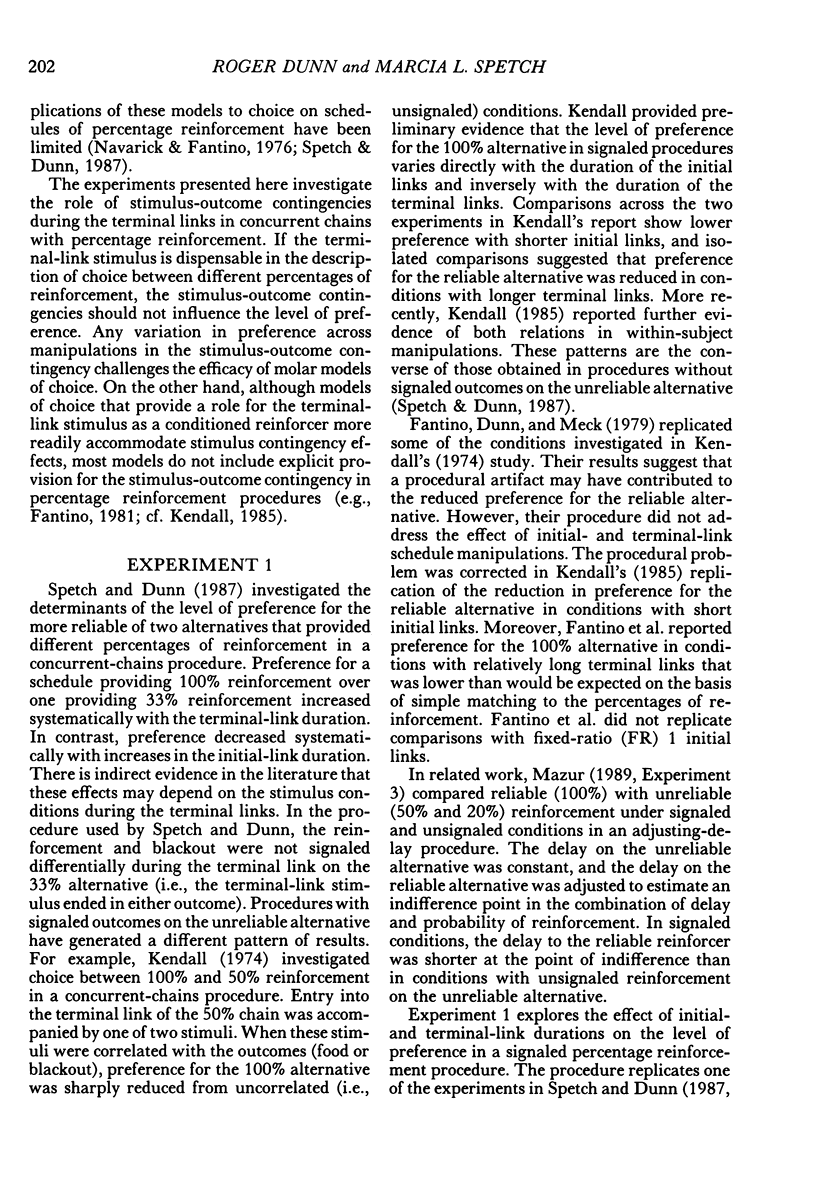
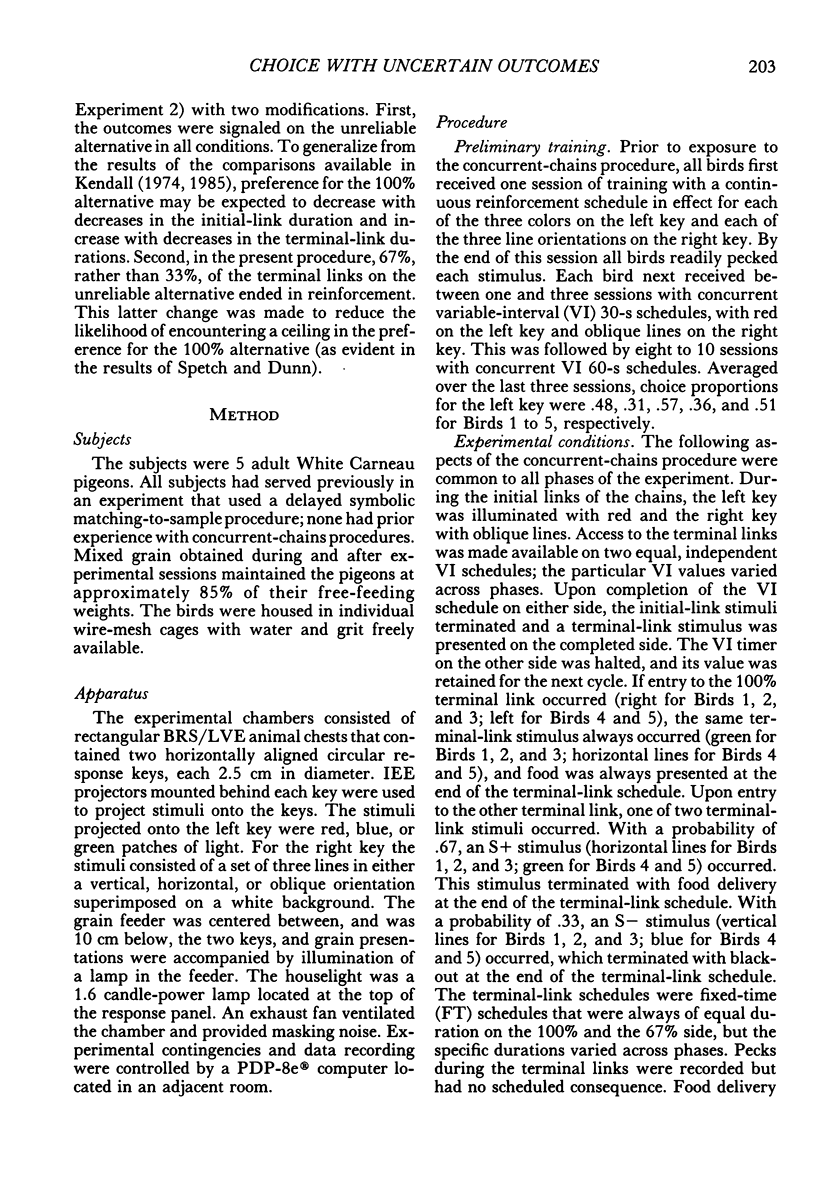
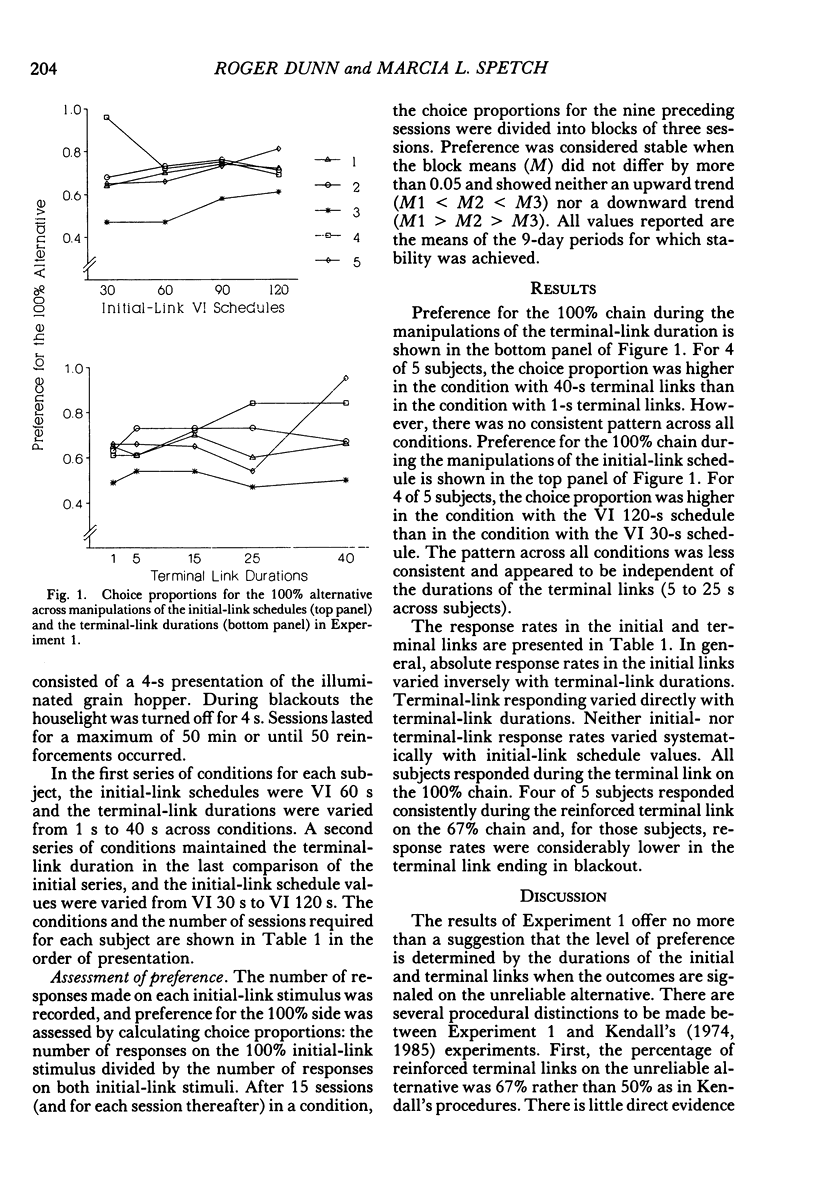
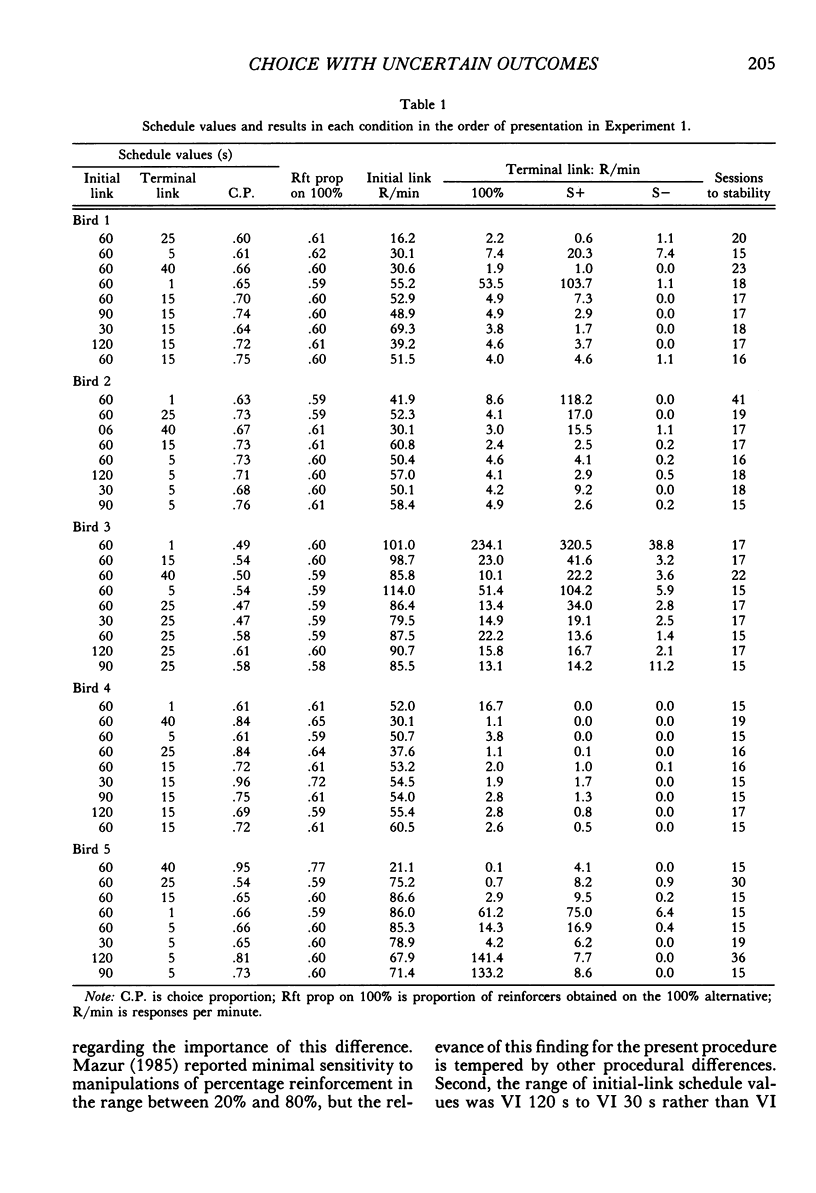
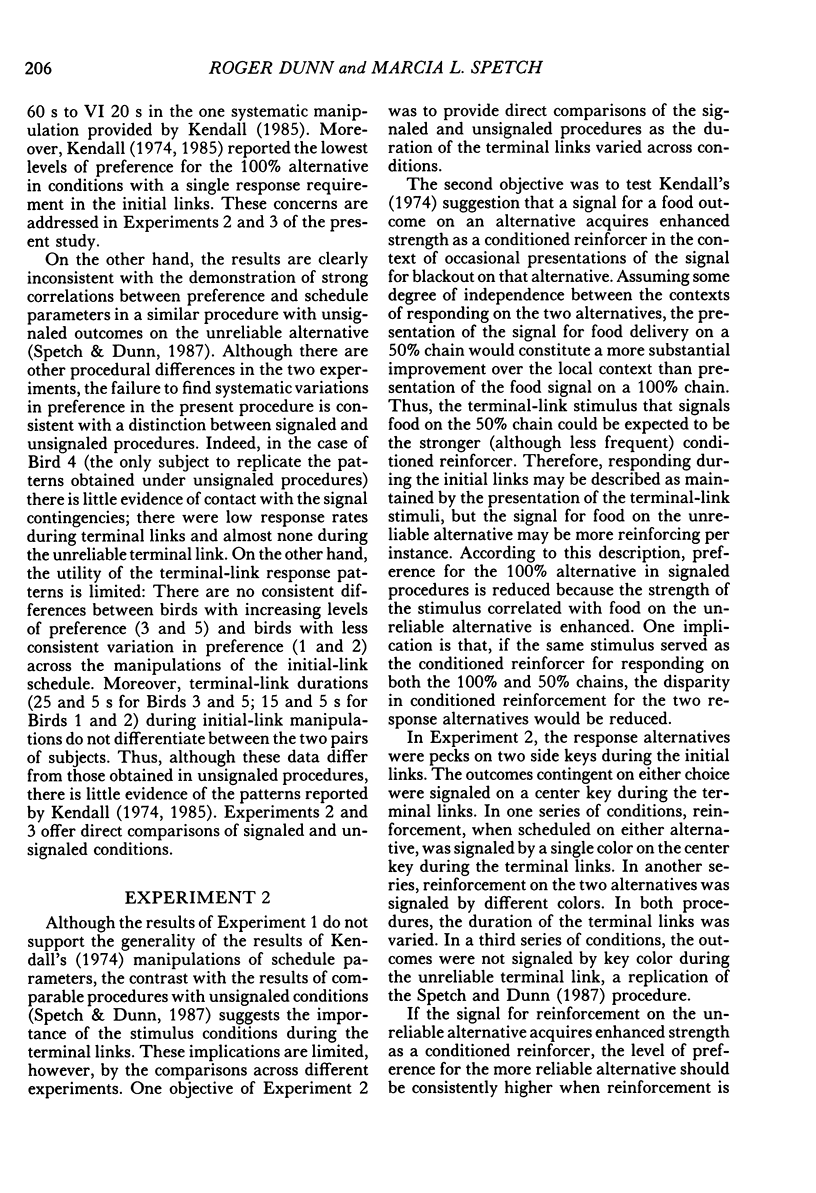
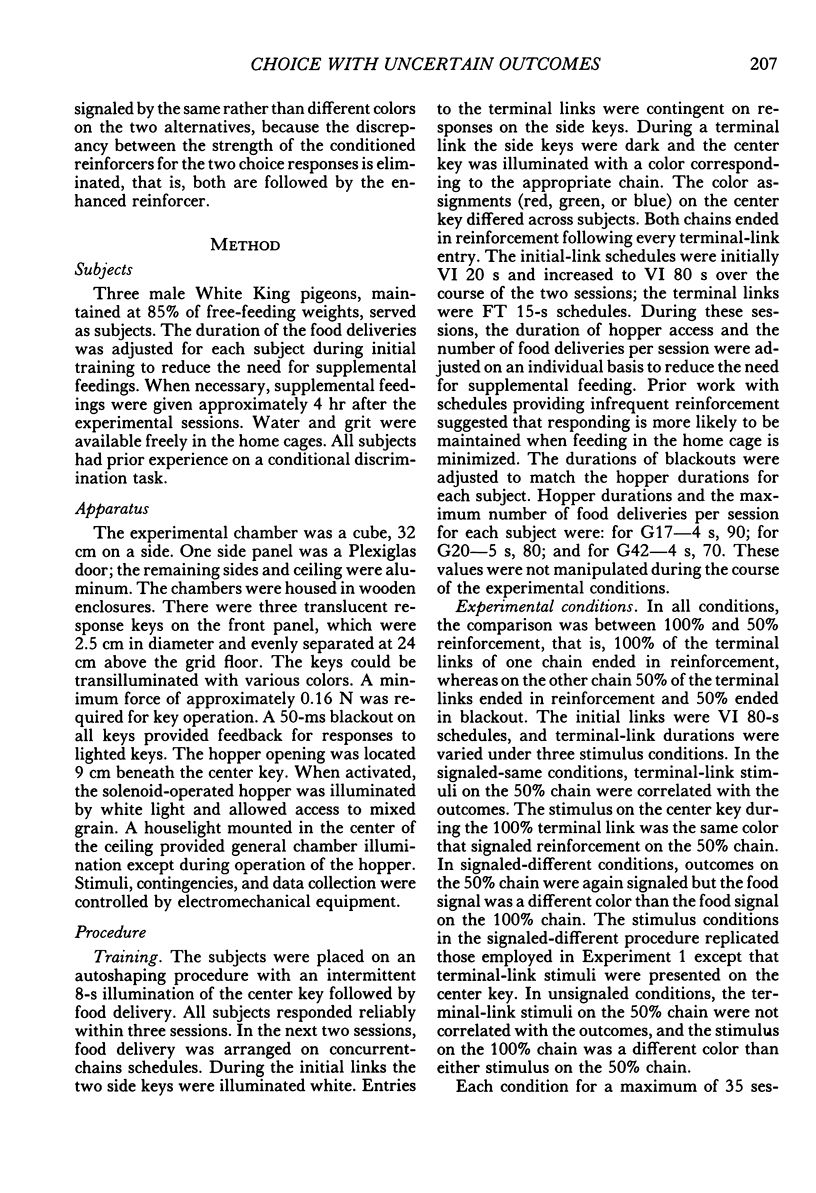
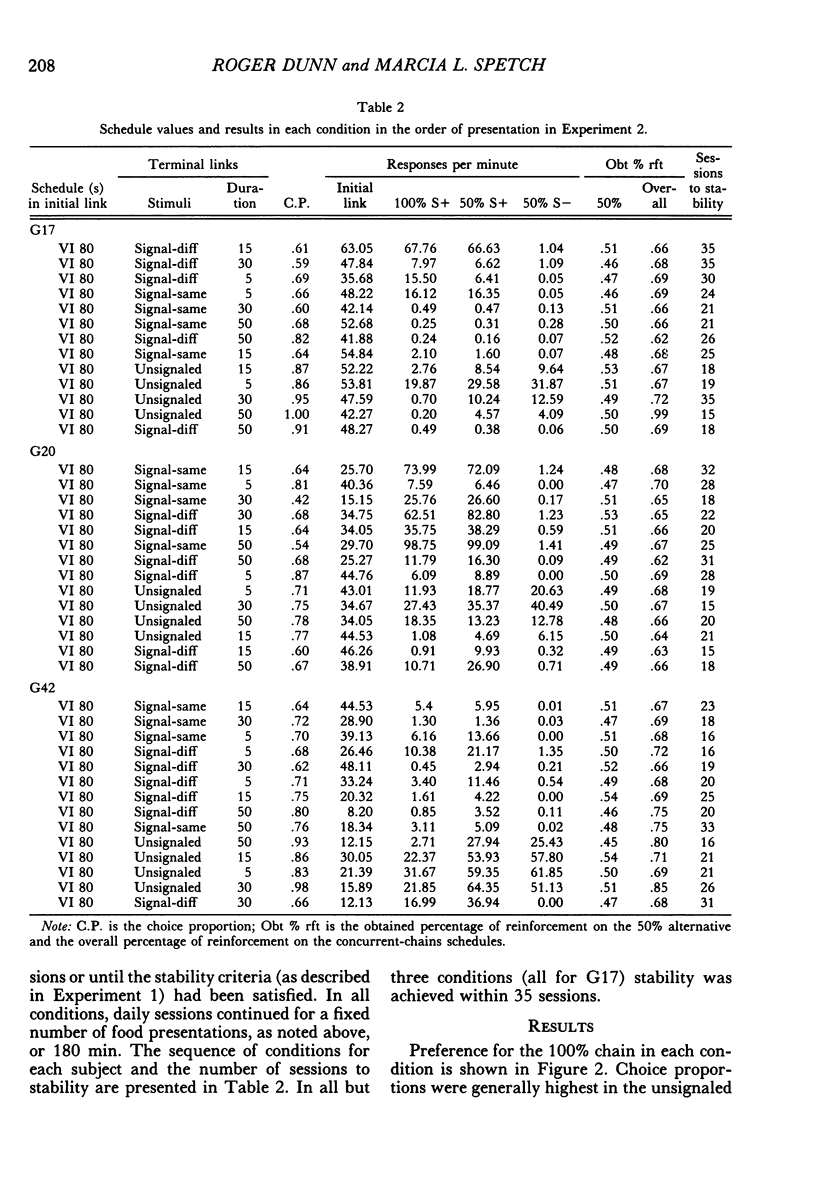
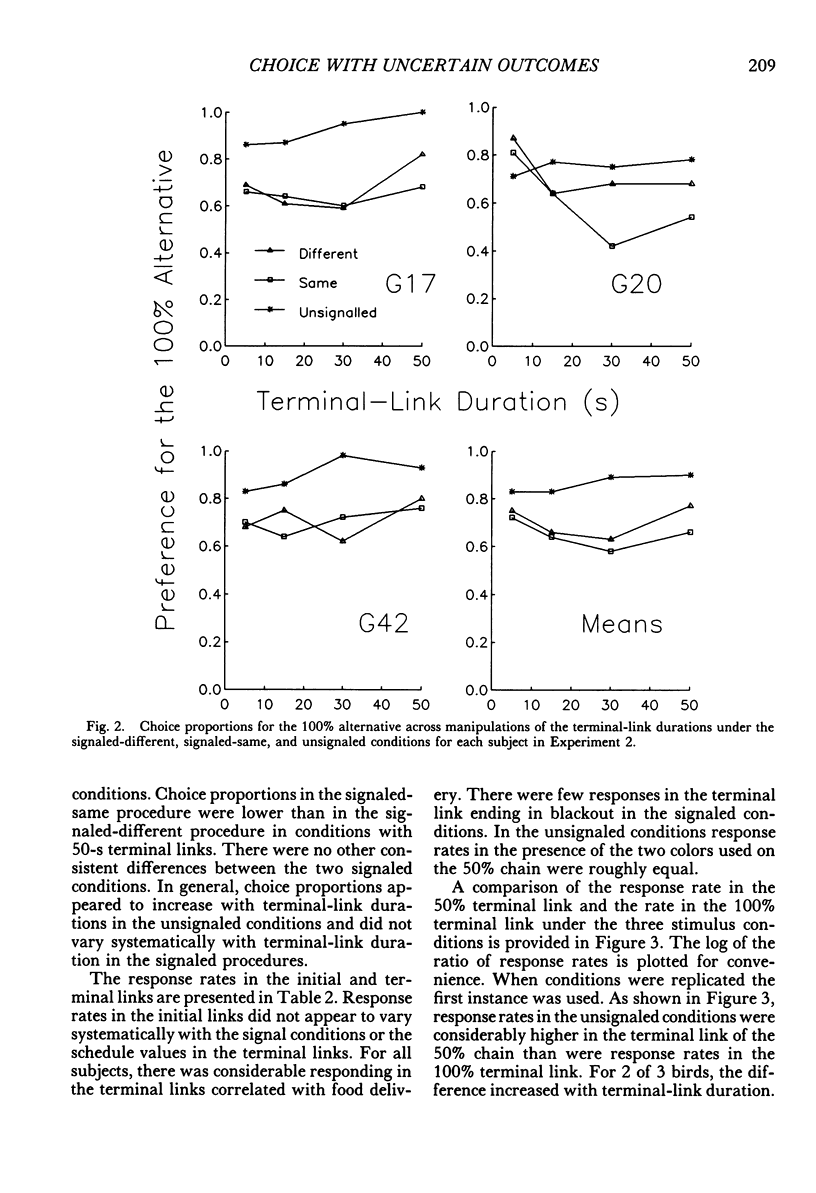
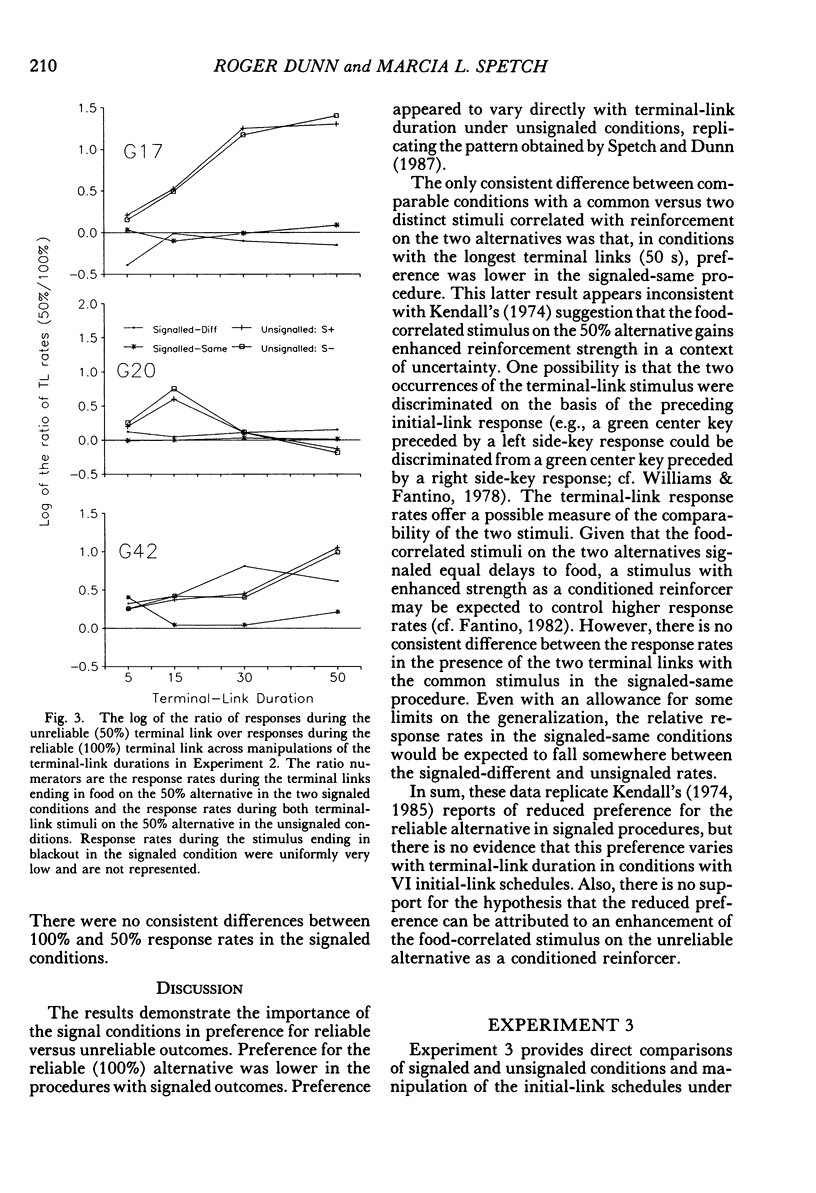

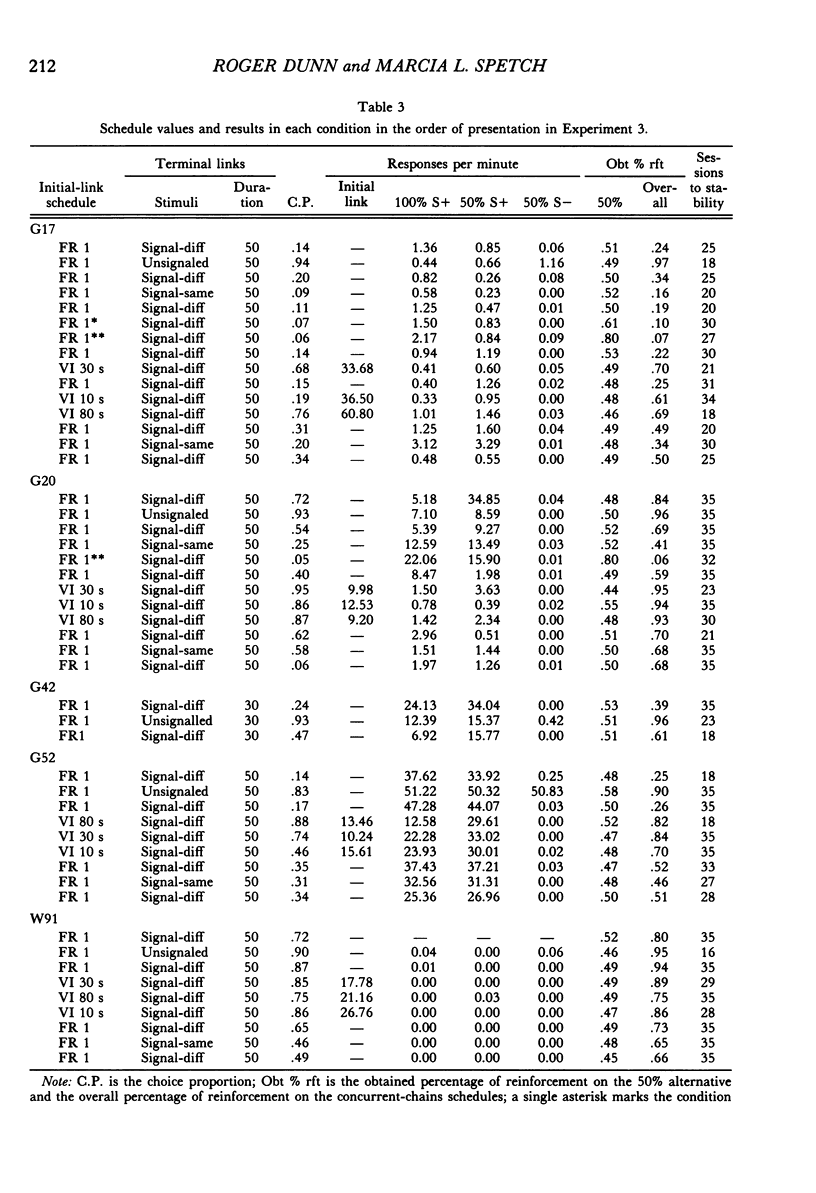
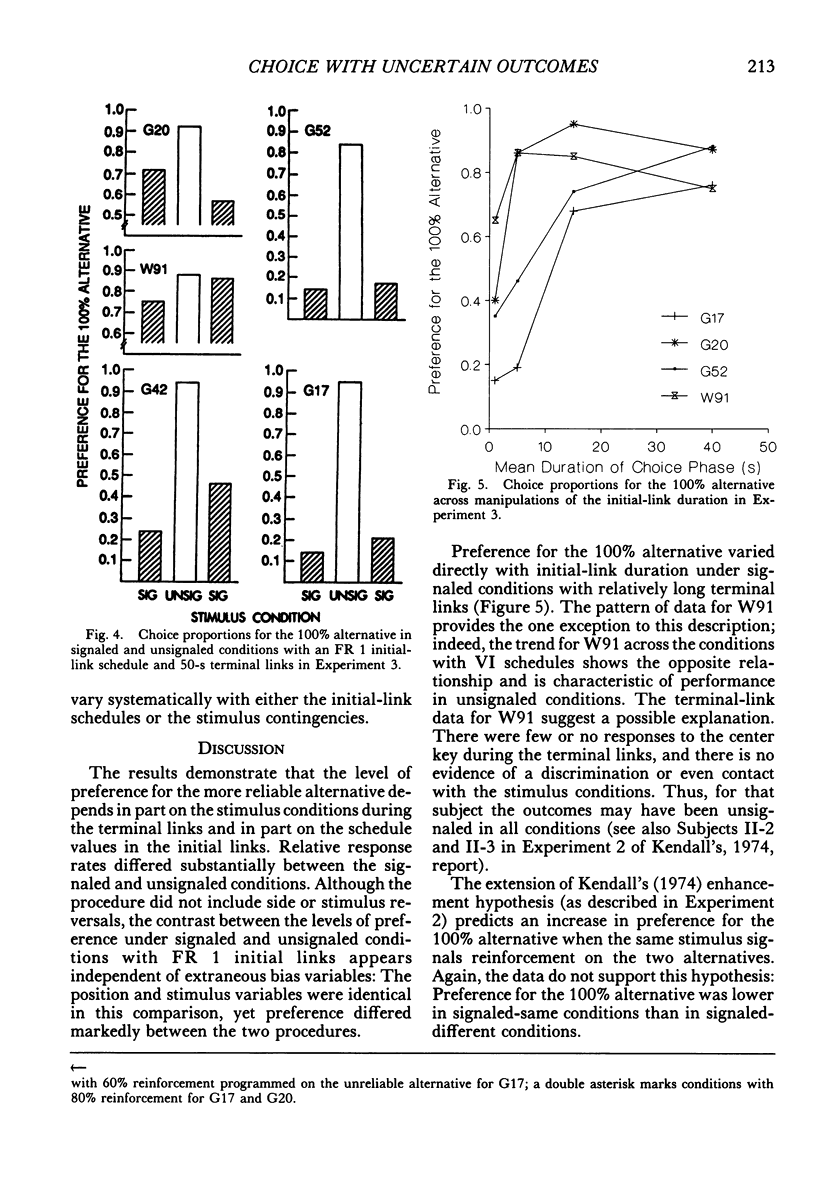
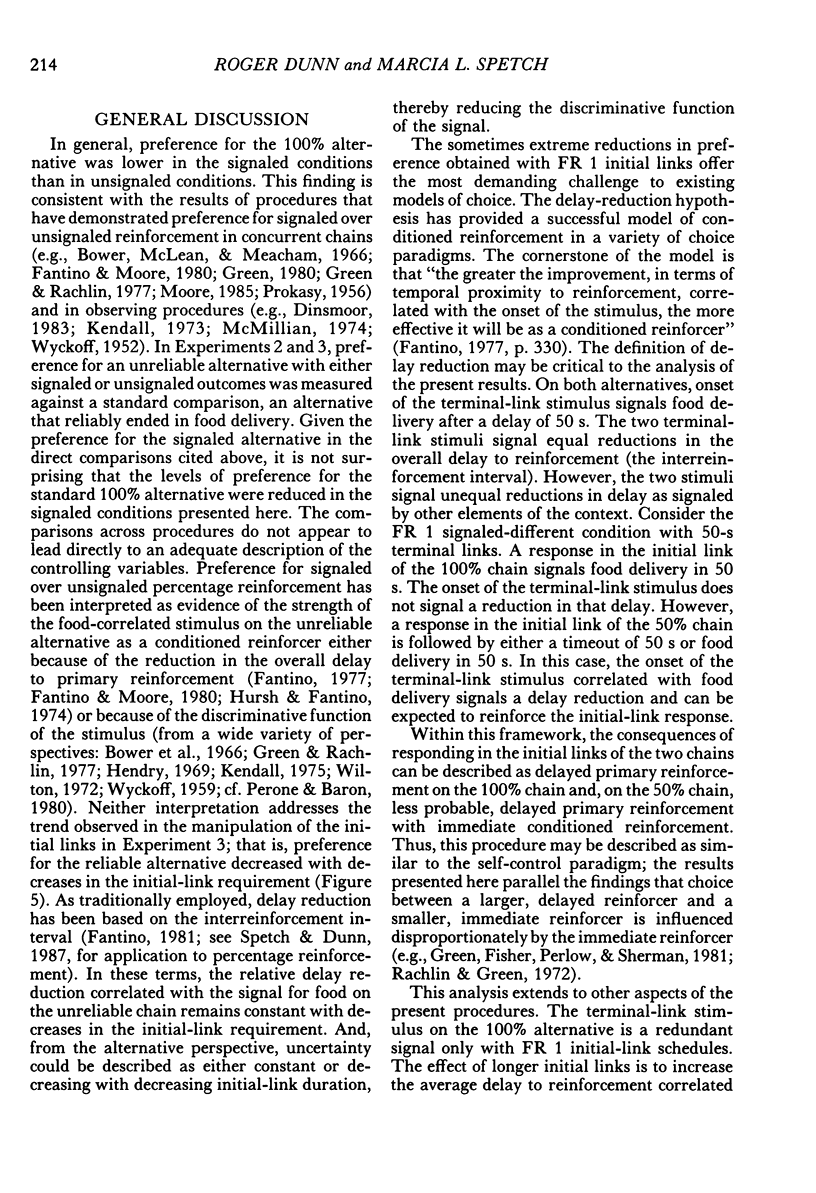
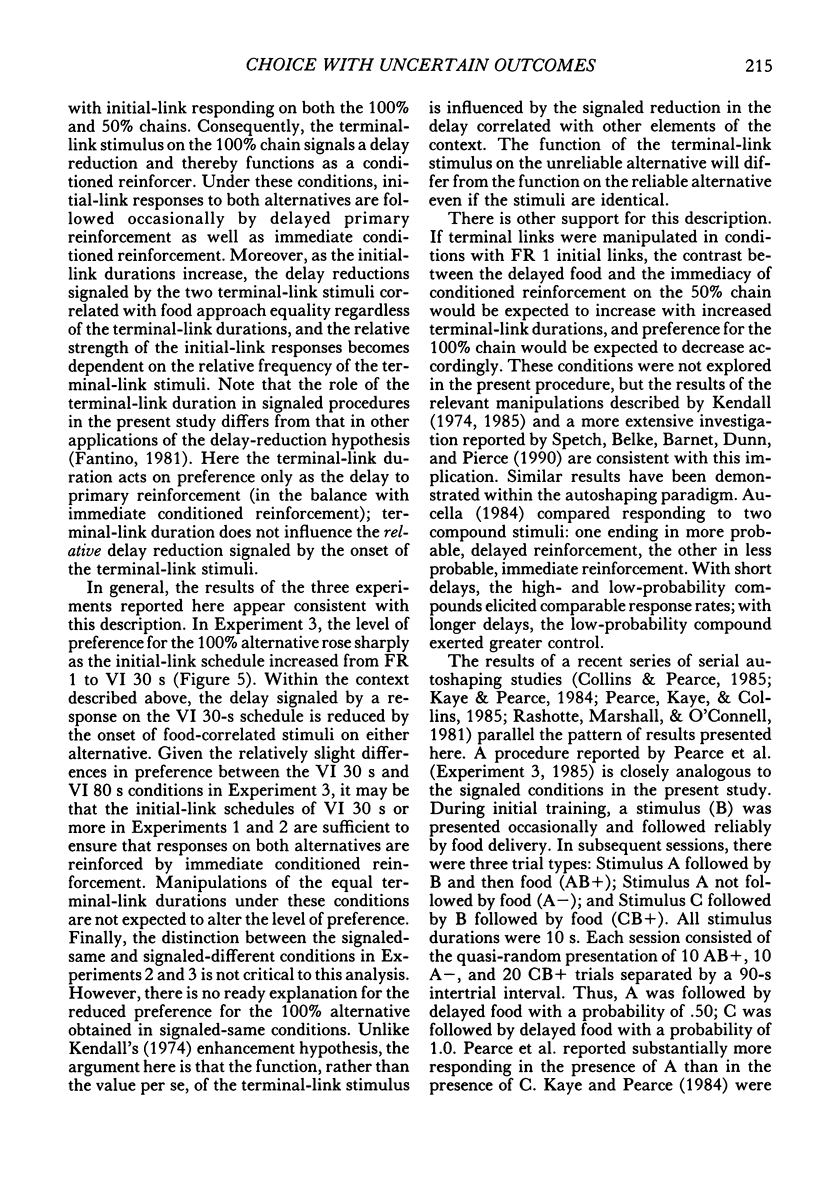
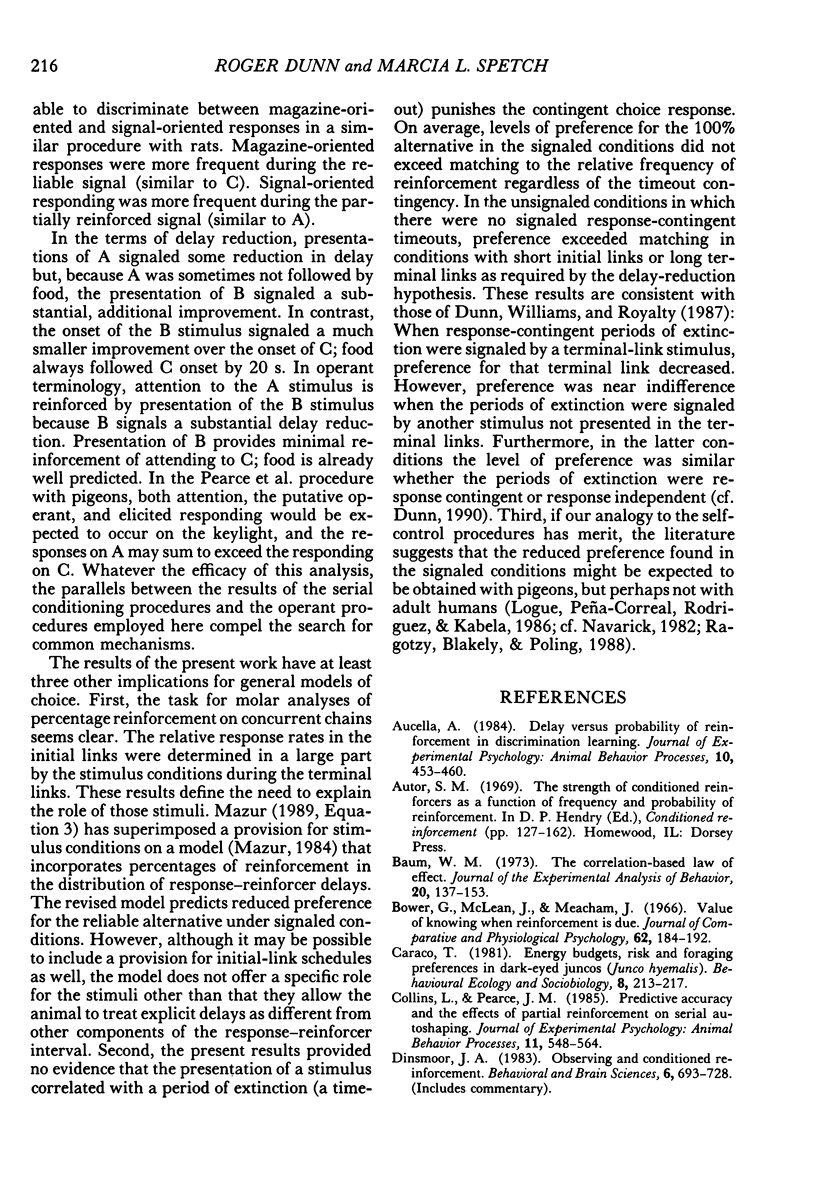
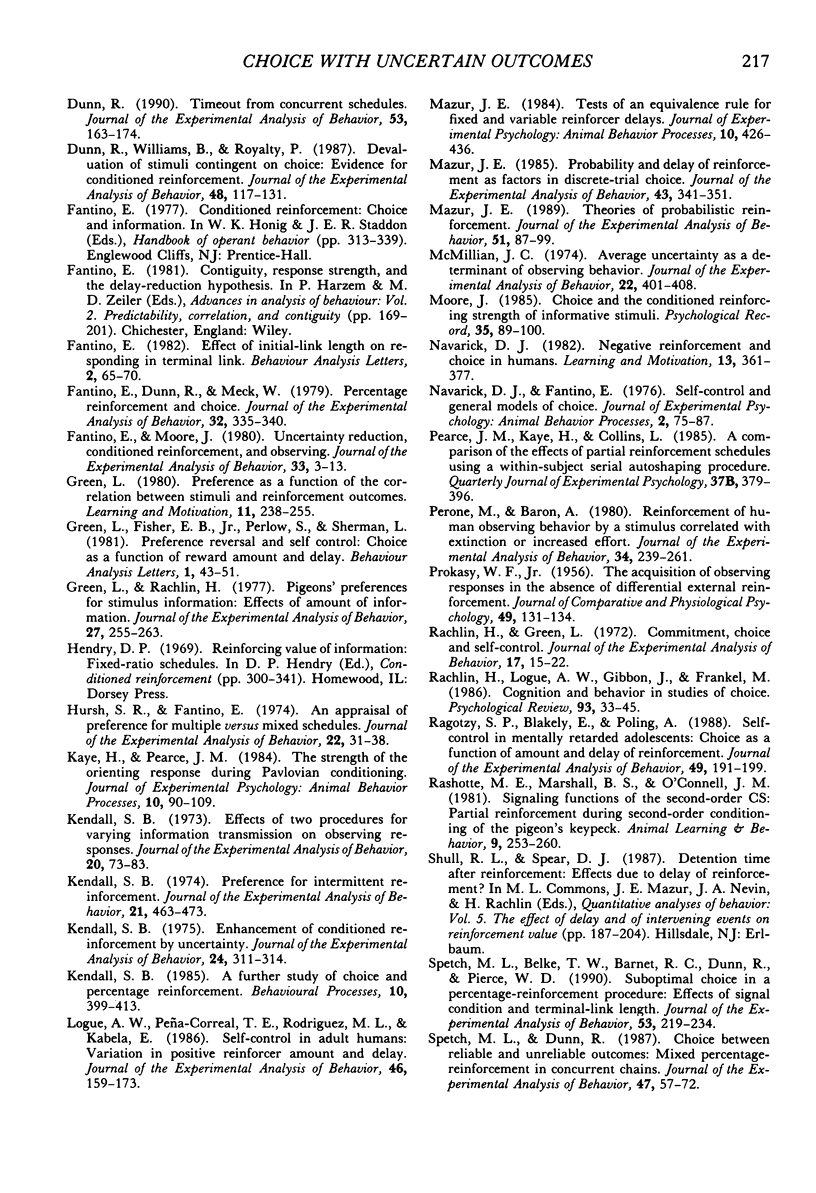
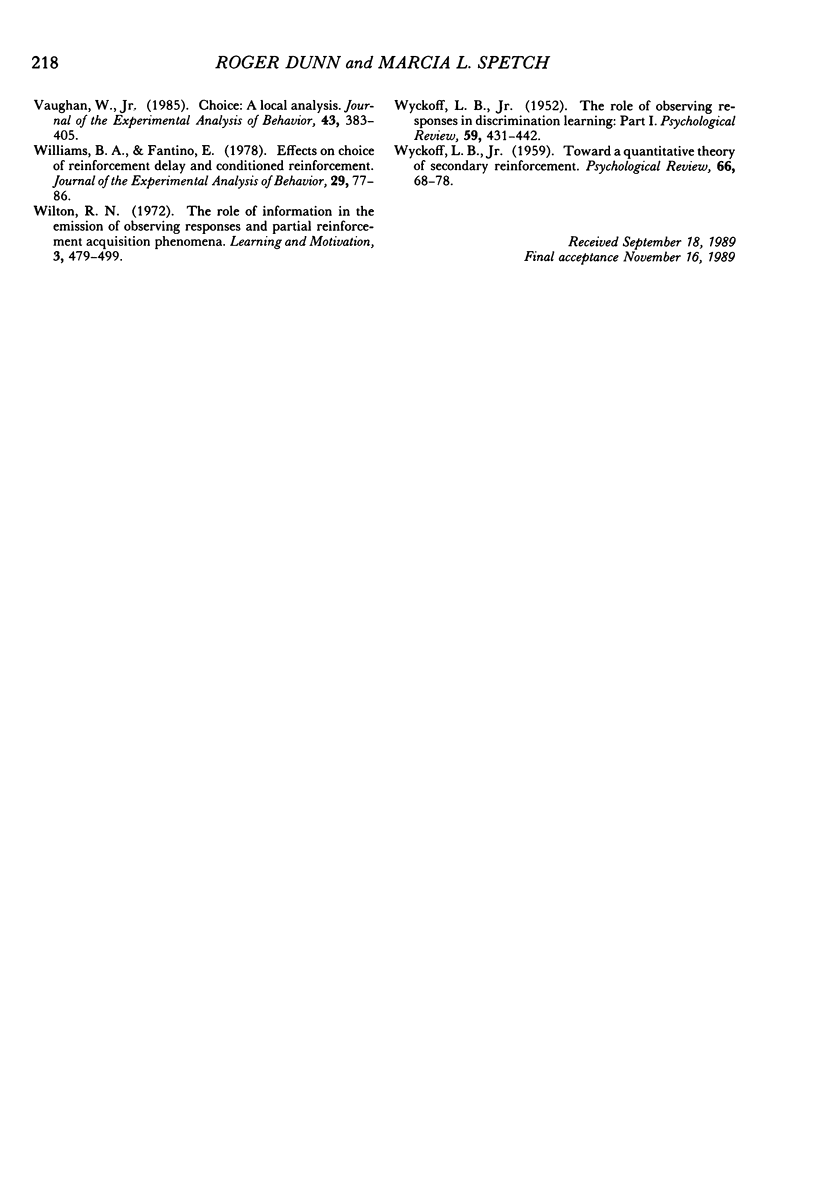
Selected References
These references are in PubMed. This may not be the complete list of references from this article.
- Baum W. M. The correlation-based law of effect. J Exp Anal Behav. 1973 Jul;20(1):137–153. doi: 10.1901/jeab.1973.20-137. [DOI] [PMC free article] [PubMed] [Google Scholar]
- Bower G., McLean J., Meacham J. Value of knowing when reinforcement is due. J Comp Physiol Psychol. 1966 Oct;62(2):184–192. doi: 10.1037/h0023682. [DOI] [PubMed] [Google Scholar]
- Dunn R. Timeout from concurrent schedules. J Exp Anal Behav. 1990 Jan;53(1):163–174. doi: 10.1901/jeab.1990.53-163. [DOI] [PMC free article] [PubMed] [Google Scholar]
- Dunn R., Williams B., Royalty P. Devaluation of stimuli contingent on choice: evidence for conditioned reinforcement. J Exp Anal Behav. 1987 Jul;48(1):117–131. doi: 10.1901/jeab.1987.48-117. [DOI] [PMC free article] [PubMed] [Google Scholar]
- Fantino E., Dunn R., Meck W. Percentage reinforcement and choice. J Exp Anal Behav. 1979 Nov;32(3):335–340. doi: 10.1901/jeab.1979.32-335. [DOI] [PMC free article] [PubMed] [Google Scholar]
- Fantino E., Moore J. Uncertainty reduction, conditioned reinforcement, and observing. J Exp Anal Behav. 1980 Jan;33(1):3–13. doi: 10.1901/jeab.1980.33-3. [DOI] [PMC free article] [PubMed] [Google Scholar]
- Green L., Rachlin H. Pigeons' preferences for stimulus information: effects of amount of information. J Exp Anal Behav. 1977 Mar;27(2):255–263. doi: 10.1901/jeab.1977.27-255. [DOI] [PMC free article] [PubMed] [Google Scholar]
- Hursh S. R., Fantino E. An appraisal of preference for multiple versus mixed schedules. J Exp Anal Behav. 1974 Jul;22(1):31–38. doi: 10.1901/jeab.1974.22-31. [DOI] [PMC free article] [PubMed] [Google Scholar]
- Kaye H., Pearce J. M. The strength of the orienting response during Pavlovian conditioning. J Exp Psychol Anim Behav Process. 1984 Jan;10(1):90–109. [PubMed] [Google Scholar]
- Kendall S. B. Effects of two procedures for varying information transmission on observing responses. J Exp Anal Behav. 1973 Jul;20(1):73–83. doi: 10.1901/jeab.1973.20-73. [DOI] [PMC free article] [PubMed] [Google Scholar]
- Kendall S. B. Enhancement of conditioned reinforcement by uncertainty. J Exp Anal Behav. 1975 Nov;24(3):311–314. doi: 10.1901/jeab.1975.24-311. [DOI] [PMC free article] [PubMed] [Google Scholar]
- Kendall S. B. Preference for intermittent reinforcement. J Exp Anal Behav. 1974 May;21(3):463–473. doi: 10.1901/jeab.1974.21-463. [DOI] [PMC free article] [PubMed] [Google Scholar]
- Logue A. W., Peña-Correal T. E., Rodriguez M. L., Kabela E. Self-control in adult humans: variation in positive reinforcer amount and delay. J Exp Anal Behav. 1986 Sep;46(2):159–173. doi: 10.1901/jeab.1986.46-159. [DOI] [PMC free article] [PubMed] [Google Scholar]
- Mazur J. E. Probability and delay of reinforcement as factors in discrete-trial choice. J Exp Anal Behav. 1985 May;43(3):341–351. doi: 10.1901/jeab.1985.43-341. [DOI] [PMC free article] [PubMed] [Google Scholar]
- Mazur J. E. Theories of probabilistic reinforcement. J Exp Anal Behav. 1989 Jan;51(1):87–99. doi: 10.1901/jeab.1989.51-87. [DOI] [PMC free article] [PubMed] [Google Scholar]
- McMillan J. C. Average uncertainty as a determinant of observing behavior. J Exp Anal Behav. 1974 Sep;22(2):401–408. doi: 10.1901/jeab.1974.22-401. [DOI] [PMC free article] [PubMed] [Google Scholar]
- PROKASY W. F., Jr The acquisition of observing responses in the absence of differential external reinforcement. J Comp Physiol Psychol. 1956 Apr;49(2):131–134. doi: 10.1037/h0046740. [DOI] [PubMed] [Google Scholar]
- Perone M., Baron A. Reinforcement of human observing behavior by a stimulue correlated with extinction or increased effort. J Exp Anal Behav. 1980 Nov;34(3):239–261. doi: 10.1901/jeab.1980.34-239. [DOI] [PMC free article] [PubMed] [Google Scholar]
- Rachlin H., Green L. Commitment, choice and self-control. J Exp Anal Behav. 1972 Jan;17(1):15–22. doi: 10.1901/jeab.1972.17-15. [DOI] [PMC free article] [PubMed] [Google Scholar]
- Ragotzy S. P., Blakely E., Poling A. Self-control in mentally retarded adolescents: choice as a function of amount and delay of reinforcement. J Exp Anal Behav. 1988 Mar;49(2):191–199. doi: 10.1901/jeab.1988.49-191. [DOI] [PMC free article] [PubMed] [Google Scholar]
- Spetch M. L., Belke T. W., Barnet R. C., Dunn R., Pierce W. D. Suboptimal choice in a percentage-reinforcement procedure: effects of signal condition and terminal-link length. J Exp Anal Behav. 1990 Mar;53(2):219–234. doi: 10.1901/jeab.1990.53-219. [DOI] [PMC free article] [PubMed] [Google Scholar]
- Spetch M. L., Dunn R. Choice between reliable and unreliable outcomes: mixed percentage-reinforcement in concurrent chains. J Exp Anal Behav. 1987 Jan;47(1):57–72. doi: 10.1901/jeab.1987.47-57. [DOI] [PMC free article] [PubMed] [Google Scholar]
- Vaughan W. Choice: A local analysis. J Exp Anal Behav. 1985 May;43(3):383–405. doi: 10.1901/jeab.1985.43-383. [DOI] [PMC free article] [PubMed] [Google Scholar]
- WYCKOFF L. B., Jr The role of observing responses in discrimination learning. Psychol Rev. 1952 Nov;59(6):431–442. doi: 10.1037/h0053932. [DOI] [PubMed] [Google Scholar]
- WYCKOFF L. B. Toward a quantitative theory of secondary reinforcement. Psychol Rev. 1959 Jan;66(1):68–78. doi: 10.1037/h0046882. [DOI] [PubMed] [Google Scholar]
- Williams B. A., Fantino E. Effects on choice of reinforcement delay and conditioned reinforcement. J Exp Anal Behav. 1978 Jan;29(1):77–86. doi: 10.1901/jeab.1978.29-77. [DOI] [PMC free article] [PubMed] [Google Scholar]


